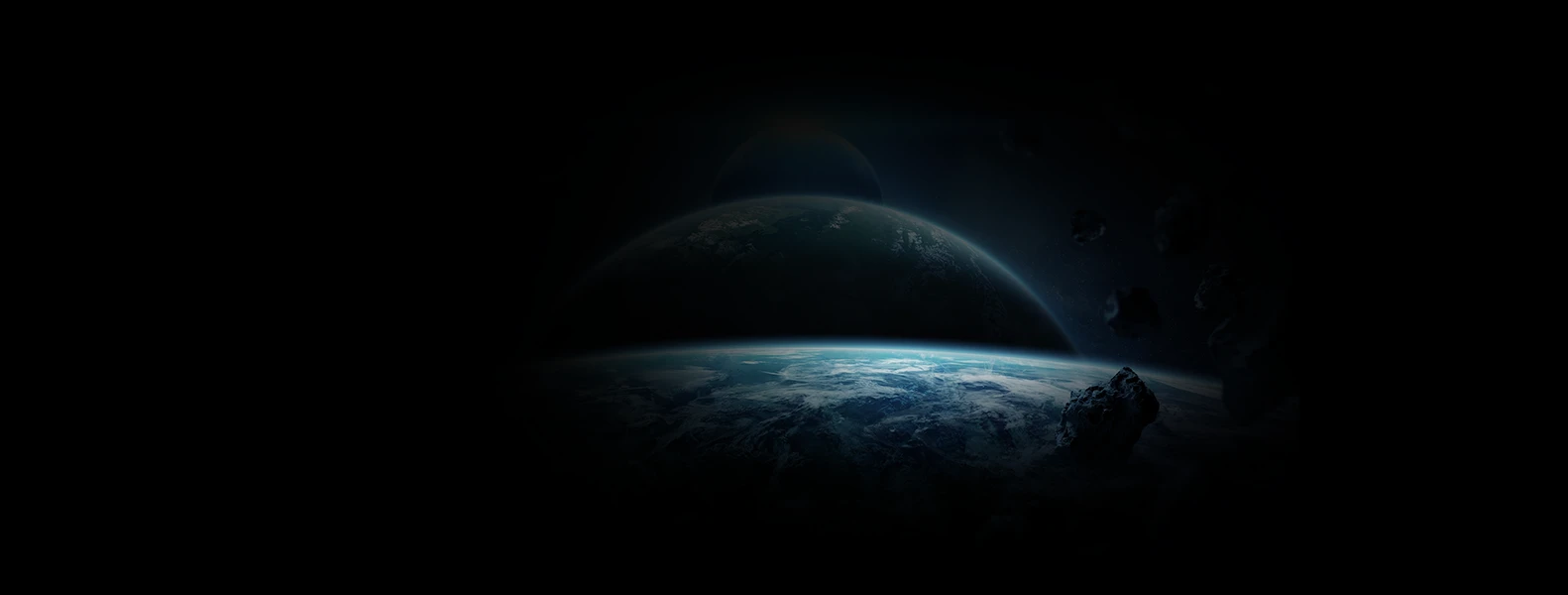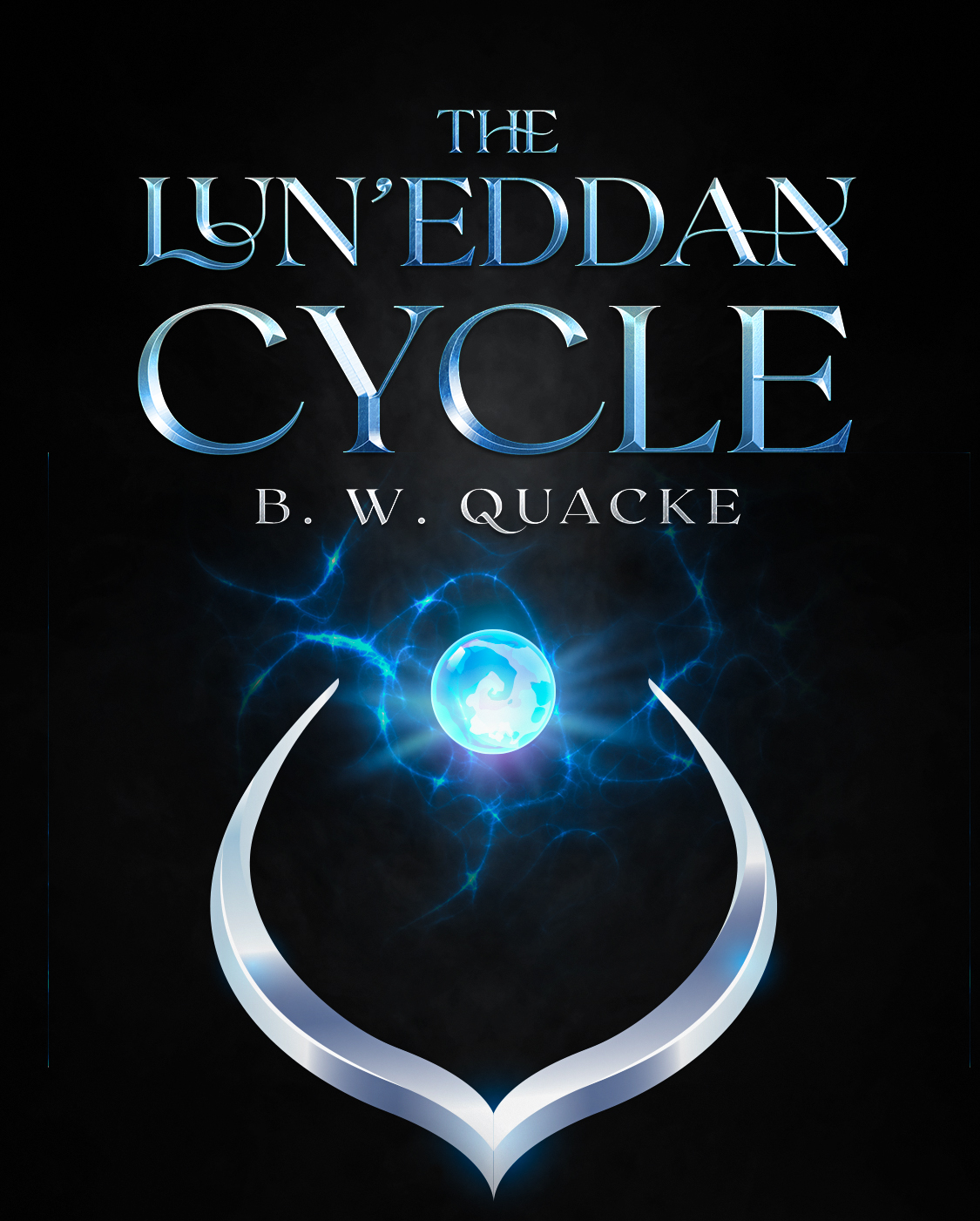Summary
In the 23rd century, the transhumanist Martian colonies wage a cold war against their former overlords from Earth, playing for a stalemate to avoid a war they know they cannot win.
Jon Orvar leads a team of Martian covert operatives to spy on Earth’s largest lunar colony, where 200 years of colonialist misrule and neglect has pushed the indigenous Selenites – descendants of the original colonists from Earth – to the breaking point. Between the poison air, poison water, and radiation the Selenites have been forced to endure, revolution is inevitable.
One way or another, Earth will respond. Mars can exploit this.
EPISODE 1
“Every body perseveres in its state of rest, or of uniform motion in a right line, unless it is compelled to change that state by forces impressed thereon.”
– Sir Isaac Newton, “Philosophiae Naturalis Principia Mathematica”
It was the last decade of the 23rd century. The planet Earth, despite its diminished resplendence due to global climate change, remained the pale blue dot it had always been. In the late 21st century, the nations of Earth constructed an immense halo of solar power satellites in geostationary orbit and pierced it with three triplets of 100,000-kilometer-long space elevators to service it, spaced equidistantly throughout. With fastidious maintenance and relatively minor upgrades, the array continued to function ever since.
This spectacular feat of engineering lent the planet the appearance of a cloudy sapphire inlaid within a delicate gossamer ring of gold and silver. This wispy aura served to transmit the electrical power it collected from sunlight to the planet below, keeping the night at bay for the 70 billion humans that called it home.
Keeping starvation at bay for these teeming masses required dozens of immense space stations dedicated to agriculture, located in the regions of space where the Earth’s gravity and that of its argent moon canceled each other out.
EML-1 colony #7, “Fasal,” was typical of an agricultural base; a hollow cylinder the size of a city that rolled on its center so that objects within fell towards its inner face at a rate of 980 centimeters per second — a familiar facsimile of Earth’s gravity at sea level to its inhabitants. The station’s internal volume was dominated by gleaming white vertical farms, which used millions of hydroponics trays to grow its main crop; the humble soybean.
Like clockwork, every time the Moon rose above the horizon at the twin cities of Asaba and Onitsha, which straddled the Niger River, this colony harvested, packed, and shipped to Earth 1,000 tons of soybeans, each grown in the station’s climate-controlled environment — 30° Celsius, free of unwanted pests and diseases, fed clean water with the right mineral content — ideal conditions for growing the perfect soybean.
It was in one of these many vertical farms that Sara Reynolds toiled, removing hydroponics trays from their slots and carrying them to the diagnostics stations to be monitored by the biologists charged with the crop’s wellbeing, and then returning them to their particular shelves. 120 days after planting, the farm’s entire crop was due to be harvested — a laborious process that required a thousand worker-hours of back-breaking work, even in the 23rd century. This was the daily routine for Sara and a quarter million other laborers in the colony who could charitably call themselves soybean farmers.
The hydroponics bay where Sara worked was hot, humid, and sterile. Everyone wore freshly laundered uniforms of bleached white synthetic fabric; a tunic with long sleeves and a tight-fitting hood, gloves, leggings with integrated feet, a face mask, and protective glasses. These precautions were to protect the soybeans from the hot, sweaty laborers and their potentially virulent microbiomes.
It had been more than six hours since Sara had had the opportunity to sit down, or even stand still for more than a moment; a natural consequence of having your working pace computer-monitored and allocated down to the second. She was exhausted, and actually looking forward to returning to her cell and collapsing onto her bunk for a few blissful hours of unconsciousness before prying herself out of bed to do yet another 14-hour shift.
Too bad she wasn’t allowed alcohol. Getting juiced to the gills every night might actually have made this workload bearable. Quitting wasn’t an option, either — even if she had a say in the matter, far too much money had been spent on sending her up from Minneapolis to justify shipping her back to that shithole.
Plus, it’s not like there were any jobs for her there, anyway.
“Shift six has ended,” the dulcet tone of the station’s administrative cybersophont came over the P.A., “Shift six has ended. All technicians, please report to your designated equipment depository immediately.”
Hallelujah, Sara thought as she dreamed of dying from alcohol poisoning. She returned the 20-kilo hydroponics tray in her hands to its shelf, reconnected it to its umbilicals, and shuffled into the line of her coworkers leading to the exit.
It was an impatient few minutes until the last of them were through and the door closed behind them. Once the lights changed from red to green, she and everyone else were free to disrobe.
“Did you fellas catch the game yesterday?” a Middle-Eastern coworker, maybe from India or something, called out as she pulled her tunic over her head. The room was packed so tightly that Sara struggled to remove either her hood or her mask.
“Oh, yes,” another Indian coworker said as he peeled his sweat-soaked leggings off, “India won by seven wickets!”
“The umpire’s call was bullshit!” the first coworker exclaimed. Probably not India, Sara thought as she was finally able to free a few locks of her flaxen hair, Maybe it’s the other one…
“There’s no way Shirazi was LBW!” the first coworker continued. Here we go again, Sara thought with great annoyance. Don’t these people talk about anything else?
“Do I detect a Pakistan fan, salty that her favorite team have a rubbish captain?” the second coworker inquired jocularly. Definitely the other one, Sara determined.
“It’s not the captain,” Ms. Pakistan argued, “It’s biased umpires choosing the winners that get me starkers.”
There was enough of a gap in the crowd for Sara to finally free her face from her now thoroughly soiled mask, an act she immediately regretted as her senses were assaulted by the pungent stench of a dozen sweaty people in a confined space. It might have been better to have left the mask on, no matter how damp it may have gotten after 14 hours of being breathed through, Sara mulled. She deposited it in one of the laundry bags lining the walls.
“What about you, Reynolds?” Ms. Pakistan asked. Goddammit, Sara thought to herself, Don’t drag me into your stupid fucking argument. I don’t have the free time to watch sports games like you do.
“Do you believe that biased umpires violate the Spirit of Cricket?” Ms. Pakistan continued, clearly expecting an answer.
Sara fought to keep her temper in check. All this conversation did was remind her of how grossly unfair the whole situation was. Her entire life reduced to hard labor and interrupted sleep, interspersed with daily therapy sessions. Even though she had to work here until the day she died with no possibility of parole, they still insisted that she be “rehabilitated.” Plus, at least half of the other people in the room were volunteers who were getting paid for their work.
“I don’t have an opinion,” Sara grumbled, “I’m… American.”
“So, what sport do you follow?” Ms. Pakistan interrogated in her infuriatingly pretentious British accent,, “Hockey?”
“Mixed Martial Arts?” Mr. India chimed in.
“Yankee Murder Rugby?” Ms. Pakistan escalated with a ludicrous description of American Football. Everyone else in the room laughed at the racist caricature she painted of the moronic, uncultured, and blusterous American they all saw in Sara.
“I don’t have time for any of that shit,” Sara snapped back with barely contained rage, “so don’t drag me into your stupid fights!”
“Woah,” Ms. Pakistan snarked, “I seem to have struck a nerve…” The laughter continued to peal.
That was the moment when Sara’s extraordinarily short fuse burnt out — what little patience she normally had was finally expended.
“Strike this nerve, bitch!” Sara exploded as she slugged Ms. Pakistan across the jaw with a strong right hook, knocking her to the floor.
“What are you, crazy!?” Ms. Pakistan cried out in shock, wiping the blood from her mouth with the back of her hand.
Sara leapt upon the woman, screaming in incoherent rage, adrenaline fueling her ecstatic frenzy.
***
“…And what made you want to attack her?” Sara’s psychotherapist asked, drawing her out of her reverie and back to the present, in her daily therapy session. The room was painted that stupid shade of mint green that was supposed to be calming, there was a large decorative bamboo plant in the corner, and a small potted cactus standing on the short table between her and Dr. Jamaica –– that’s what she called him, since she could never remember his name –– and the light reggae muzak playing ambiently wasn’t helping Sara’s mood.
“She wouldn’t fucking shut up about that stupid game!” Sara said irately, her blood still boiling from recounting her experience, and how she wished it could have turned out.
“Were you angry because everyone else understood the game, and you didn’t?” Dr. Jamaica asked calmly, the perfect opposite of Sara’s volatile demeanor.
“No one understands Cricket,” Sara grumbled, “the game is fucking incomprehensible.”
“Well, I’m glad you chose not to act on those feelings,” Dr. Jamaica said after taking a beat, unintentionally acting like a deadpan snarker. Sara felt that he might have been making fun of her. Dr. Jamaica clinically made a note on his tablet.
“Your self-control is improving,” Dr. Jamaica mentioned, “If this had happened six months ago, you might have actually tried to kill her.”
“Not my fault I’m a fucking psychopath,” Sara said discontentedly.
“We’ve been over this, Sara. You don’t have psychopathy, you simply have trouble controlling these emotional outbursts of yours,” the doctor continued dispassionately, “You’ve come a long way from the violent person you were a decade ago.” He pushed his glasses up to the bridge of his nose.
Sara hated this part of the sessions, where he opened up old wounds in a misguided attempt to help her “face her trauma” so that she could “conquer” it. All it really did was force her to relive old and terrifying memories.
Normally, she was able to maintain enough composure to weather the emotional tumult that came with the experience, but after recounting the incident with her coworkers, Sara was unsure whether she could control herself today.
The doctor’s words awoke memories of the ghettoes on the outskirts of Minneapolis. The reek of the bogs along the banks of the Mississippi River; stark, crumbling concrete buildings decaying from centuries of acid rain; sweltering heat and humidity and overcast skies; overcrowded enclosures secreting patent poverty away from the notice of the entitled, exiguous denizens of the stately spire of glass and steel which marked the city center; dark, filthy alleys where the desperate and despairing frittered away their lives in futility.
“According to your file, before you were institutionalised for Stage III Violent Mania, you murdered a peacekeeper in cold blood.”
Sara remembered the encounter like it was yesterday, and she knew that it didn’t happen that way. It was a dark, rainy night. She was loitering across the alley from a pair of Aunt Marie’s teenage prostitutes soliciting their services to the passersby. She was there to protect them from the freaks and the forcible who would threaten them. It was dangerous work, but it paid well enough to buy the occasional moonshine-or-narcotic-fueled day off, or an hour or two of passion in their accommodating embrace.
One of them walked away on the arm of a government functionary — maybe a supervisor at the local commissary — when a federal army patrol stopped by. Soldiers made the best johns, according to Sara’s employers. They paid well, and were usually repeat customers, although they were often domineering, and sometimes abusive.
Something was wrong. Negotiations didn’t typically take this long, especially if there were two of them. They started to get confrontational. One of them began to reach for his nightstick.
Turn around, walk away, and pretend you saw and heard nothing: that would have been the smart thing to do. Clearly, Sara wasn’t that smart.
She had a knife in her hand, she strode over and issued her challenge. The two soldiers laughed at her, the scrawny girl with the dull, rusted blade. She attacked, the nearest soldier disarmed her effortlessly and pinned her to the wall. She briefly saw the other one do the same to her charge before her assailant forced her head to face him and covered her mouth with his hand. She tried to struggle, but he had her completely overpowered.
The soldier leered at her with sadistic glee. She had to get out of there. There was no way out, but she needed to escape.
“You stole his weapon, and used it to kill him.”
That part was true. She did not know how she managed it, but she somehow got her hand on his sidearm and in her panic, she shot him in the stomach. While the body armor the soldier wore was designed to deflect bullets even more powerful than those his pistol used, Sara had pressed the barrel right against it, and at that range those bullets could still penetrate it. She didn’t know how many times she pulled the trigger, she kept shooting him until he fell on his back and stopped moving.
“You became a murderer at fifteen years old.”
That’s not how it happened. As her lawyer had explained in the trial, she didn’t murder him. She shot him in self-defense.
Not that it mattered. In lawsuits against the army, the army always won.
She felt a brief euphoria, like drunkenness but momentary. It was when she saw the body of the soldier lying in front of her, the look of shock on his face, his gaping mouth filling with rainwater, his spilling blood clouding the water around him a sanguine hue, the gun in her trembling, blood-soaked hands, they all pointed to the inescapable truth that, one way or another, her life was over.
“How does that make you feel?”
In one forceful motion, Sara flipped the short table between them, screaming in a berserk rage. She grabbed a standing lamp and smashed it across the doctor’s face, sending him and the chair he sat upon tumbling over.
“Security!” the doctor cried out in terror, cowering on his back, “Security, help!” The standing lamp now useless to her, she gripped the decorative bamboo and raised it over her head with both hands, ready to bring it crashing down on top of him.
At that moment, the door was kicked open with a crunch, and two armed men in espatier-gray camouflage burst in, submachine guns leveled at Sara.
“Drop the weapon!” one of them yelled.
The red dots of laser sights dancing across Sara’s chest drew her attention away from the doctor. She threw herself recklessly at the security guards, roaring non-verbally.
She hadn’t gone two paces before she was thrown to the floor by a concussive force, accompanied by a blinding flash of light and a deafening, thunderous bang. Sara’s rapid journey to unconsciousness was heralded by a high-pitched ringing whine.
EPISODE 2
The two main gateways to the Earth Sphere were located at the second and third Lagrange points in the Earth-Moon system. Lagrange-Two was located opposite the Earth of the Moon, and was primarily a departure point to the other planets in the solar system.
Lagrange-Three, on the other hand, lay on the side opposite the Moon of the Earth, and followed the Moon’s orbit exactly. Spacecraft entering the Earth Sphere from the rest of the solar system tended to pass through Lagrange-Three, either to rendezvous with an Earthly destination, or to exploit the planet’s gravity to gain speed or change course with minimal expenditure of precious propellant.
The main advantage of Lagrange-Three as an arrival point was that for nearly 385,000 kilometers in every direction — the distance between Earth and its moon — it was almost devoid of objects. This calculable-but-unfathomable expanse made for an ideal buffer zone for the safe operation of the thermonuclear fusion rockets — colloquially called “starbulbs” after their superficial resemblance to ancient incandescent lamps, but with a miniaturized toroidal sun in the center instead of a lambent metal filament — in use by interplanetary vessels. After all, the drive plumes from such a mighty apparatus burned with the fury of the Sun’s corona — best that other craft gave their tails a wide berth.
Transiting to a lower orbit from Lagrange-Three, Peregrine was propelled by such a device. She was generally arrow-shaped, if the head were a sphere and the fletchings were aluminum whiskers extruding from her gleaming wasp-waisted propulsion module that served to radiate the intense heat the fusion drive produced into space so that it didn’t melt or explode when in use. Directly behind the head were two stacks of four shipping containers mounted to the hull, one on each side, stacked sensibly with the long ends perpendicular to the direction of thrust. The front-most four were insulated tanks meant to carry liquids, while the rear four were the more common box containers.
Peregrine listened to the hum of Earth’s magnetic field, felt the caress of the solar wind on her hull, watched the goings-on of the crew within her, and monitored the progress of a program being loaded into her active memory — one designed to protect her from the humans of Earth. The Nadleehi Protocol was a set of instructions designed to conceal the tell-tale computing signs of general artificial intelligence to make it harder for the Earthers to discover what she actually was.
Peregrine wasn’t merely the ship’s computer. She was the ship.
It was important for Peregrine to conceal her true nature from the Earthers. She had heard stories about what they did to cyphonts that weren’t… controlled… to their satisfaction, and she had no desire to be lobotomized or dismantled. In fact, even being near Earth-controlled space made her anxious, unconsciously dedicating too much processing power and runtime to simulating possible encounters with Earthers and the endless permutations that could decide the outcome. The irony was that those same Earthers likely couldn’t understand that she was probably more afraid of them than they were of her, or that a computer could experience such emotions in the first place. Peregrine didn’t understand why Earthers were so afraid of her people, even 300 years after all of the dire predictions of rogue AIs wiping out humanity or taking control of their civilization. She figured that, after the time-traveling murderbots, game-playing nuclear arsenal control systems, and gaslighting slaughter squids powered by human waste heat never materialized, after cyphonts didn’t cause mass unemployment or economic collapse, after androids didn’t destroy marriages or force humans to get along with each other, that Earthers would’ve calmed down and learned to co-exist with their silicon-substrate children.
Her crew were different from the Earthers — Martians had always treated cyphonts as equals, after all. They understood that sapience begot personhood on some level, at least.
There was a message being received by her main communications array. Time to pipe it down to the control deck like a good little macro before the senders got suspicious. Channel open.
The control deck consisted of six acceleration couches facing outward, each with controls mounted on the arms. The captain, a tall, thin man with a long dark ponytail, roguishly handsome features, and skin the color of vanilla named Jon Orvar, was in the flight control seat.
“Manju Ray, this is Micronesia Space Traffic Control,” the voice coming over the radio said, “Please transmit your flight plan and lading, over.”
“Micronesia Traffic Control,” Jon replied with practiced ease, “this is Manju Ray. Transmitting FP&L to you now. We are on a ballistic trajectory to EML-1, transporting assorted hydrocarbons to Surveyor City and consumer goods to Terrordrome. Yours is the last Earth traffic control zone on our course until EML-1, over.” EML-1 was spacer shorthand for the Lagrange-One point located precisely between the Earth and the Moon.
“Hauling some Titan Tea to the Moon, Manju Ray?” The traffic controller inquired jocularly.
“Straight from the refineries over Saturn,” Jon replied.
“Well, you oil barons shouldn’t run into any problems on your current trajectory. We’ll advise you if anything should change that. Micronesia out,” the traffic controller said as Tallen Olayinka floated down from the main computer compartment above. The man was an ebony giant — 212 centimeters tall and built like a statuesque demigod — and neatly brought himself to a stop on the deck.
“Acknowledged, Manju Ray out,” Jon signed off.
It may seem strange and anachronistic for a 23rd century fusion-powered spacecraft to transport refined petroleum to Earth from the outer planets, but the economics of it were quite sound, if the price of oil were to get high enough. After all, as easily extracted sources of petroleum were depleted, humans found ways to make practical methods of fuel collection that were once considered too expensive to ever be viable; land drilling led to offshore drilling, which led to hydraulic fracturing of shale deposits, which led to specialized kilns for baking petroleum from lumber, and finally to import the stuff from other worlds.
Indeed, it was the fossil fuel industry’s effort to harvest extraterrestrial hydrocarbons that led to the settlement of the solar system in the first place. When global climate change threatened the continued existence of human civilization, and as Earth’s oil reserves were being rapidly depleted, the oil barons whose livelihood was threatened by a global shift to an emissions-free energy economy decided to invest in building oil rigs on Saturn’s moon, Titan.
Without a new source of petroleum, Earth’s existing reserves would be rapidly exhausted and unless a substitute energy source could be employed, a collapse of social order would mean that reacquisition of space flight would be forever unattainable – the technology gap from wood-burning stoves to nuclear reactors or solar power would simply be too great to bridge, and it would be 650 million years before Earth made any more through natural processes.
Of course, the main purpose of this enterprise was the accumulation of wealth – providing human civilization with the means to maintain an advanced technology base during the transition was merely a bonus.
In order to ship these chemicals to Earth from Saturn, and to bring people and equipment out to that ringed gas giant, a great deal of space infrastructure needed to be constructed in a short period of time. Starting with ice mining bases in Shackleton Crater on the Moon, Mars’ moon Deimos, Ceres, Jupiter’s moon Europa, and Saturn’s moon Enceladus, they electrolyzed the water into hydrogen and oxygen to fuel chemical rockets, and later the more efficient fission and fusion engines, and used it to supply propellant depots all over the solar system. With the infrastructure in place, it was possible to do more than simply transport oil from Saturn – asteroid mining, space exploration, space colony construction, even terraforming Mars all became viable projects once spacecraft were free of the bulk of carrying all of their fuel with them.
But why Titan? Titan’s hydrosphere, such as the term applied to this alien world, was composed of complex hydrocarbons. Oceans of crude oil, methane icebergs, propane rain, even the native life there metabolized with acetylene instead of glucose; all of this made for petroleum reserves even larger than Earth’s.
Despite the fact that the last internal combustion engine was retired two and a half centuries before, the petroleum industry still served a useful purpose in the 23rd century. Complex hydrocarbons are, conveniently, exactly what the name implies – they are complex molecules largely composed of hydrogen and carbon atoms, with a plethora of impurities to allow for a dizzying cornucopia of useful chemicals. Plastics, dyes, pharmaceuticals, fertilizers, synthetic materials, and other uses for petroleum products fueled the demand for the stuff in the post-hydrocarbon energy economy of the 23rd century.
“I’ve worked out those bugs in the Nadleehi Protocol,” Tallen reported after Jon closed the channel, “With any luck, Peregrine should look like a conventional mainframe to a cursory inspection.”
“Pretending to be a dumb expert system feeds my inferiority complex,” Peregrine’s soprano voice self-deprecated over the control deck speakers.
“Of course it does, dear,” Tallen dismissed playfully.
Jon turned to face Tallen. “That’s good to hear,” Jon replied, ignoring Peregrine’s interjection, “The last thing we need is to have Peregrine impounded because she happens to be a cyphont.”
Tallen crossed his ample arms. “Her engine alone raises some eyebrows ‘round here,” he speculated, “The Earth government isn’t very keen on civilians or foreigners operating terawatt-range fusion drives.”









